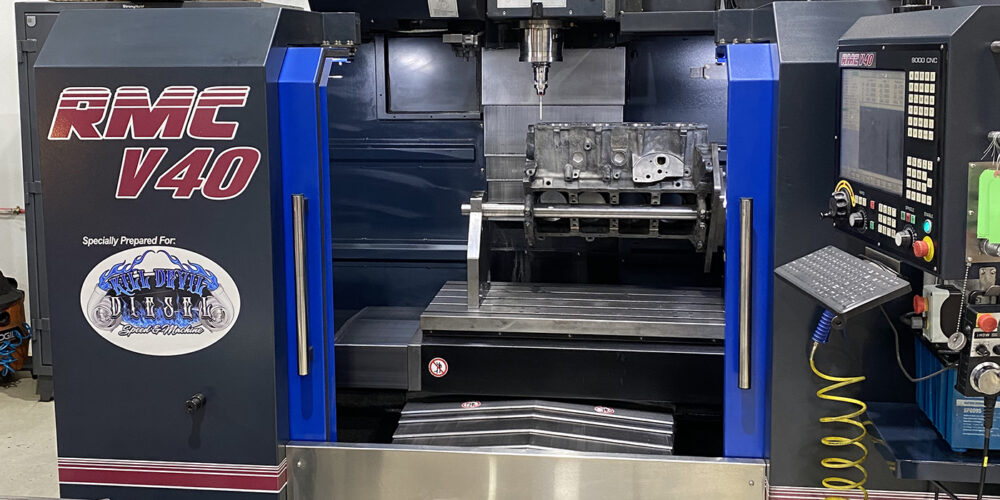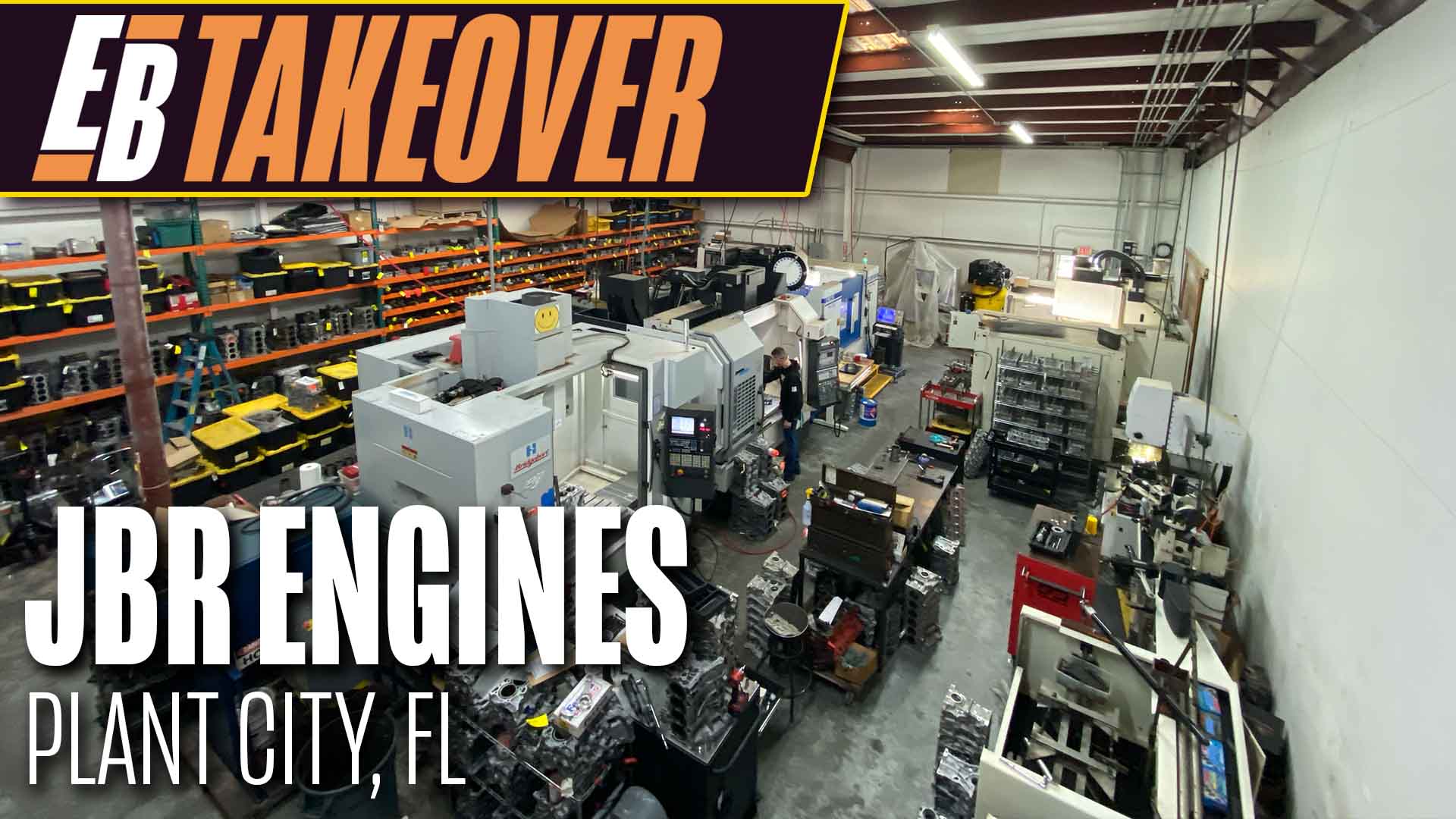If there is anything the recent pandemic brought to light in the engine building indu make, but the real value is in what these machines allow a shop to do once they have them. During a time when shop employment was, and still is, tough to come by, engine parts had record-setting long lead times, and plenty of customers still needed engines to go race, it was CNCs that often came to the rescue.
In the past few years, more and more engine shops have adopted CNC equipment of all different capabilities and sizes. While some shops may have added to, or upgraded their CNC capabilities, others made the leap into CNC for the first time. Whether it’s to add new machining capabilities, to make things more efficient, to produce parts, or a combination of it all, CNC manufacturers continue to cater to the needs of machinists through further innovation and automation.
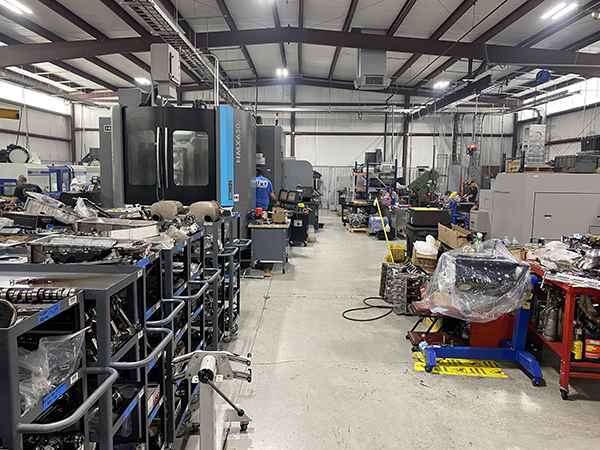
“The CNC world has changed dramatically, and it’s become more approachable,” says Mazak Application Specialist, Mike Kerscher. “It’s easier to get involved in CNC machining in terms of education and price points for machines. There are certain machines where the prices really remained constant for the past 25 years, which means inflation wise, they’ve gotten cheaper. From an education standpoint, people can go to classes and are coming out of schools or technical schools with some knowledge of CNC equipment and some knowledge of CAD systems to know how to create their own programs.”
Of course, as CNC equipment becomes more affordable, more approachable and more desirable, the engine building industry will continue to push the limits of what can and can’t be done with these machines.
Trends
Several manufacturers named automation as one of the biggest continuing trends surrounding CNC equipment these days, and it’s clearly a key contributor to a CNC machine’s ability to do more without human interference.
“Automation continues to be a big thing in our industry, probably even bigger than machine innovation is the innovation that we’ve had with the machines being essentially self-attended or with minimal manpower to attend them,” Kerscher says.
Wade Anderson, Okuma’s general manager of the Factory Automation Division agrees, saying, “Automation is the most prominent trend. I’m seeing more people adopt pre-engineered automation solutions than ever before. For larger components, customers are utilizing pallet pools more and more for their HMCs (horizontal machining centers) and 5-axis machines. This allows them to set up work to be recalled for fast customer turnaround speed.”
Hand-in-hand with automation is the software these CNCs utilize to operate properly. Software enhancements have allowed controls to become more powerful with more connectivity to third-party items, allowing customers to have the flexibility needed to create their own custom solutions.
“The great part about our machines is you aren’t limited to the programming RMC provides,” says RMC’s Matt Napolitano. “Our CNC machines have a built-in conversational programming system with pages to fill in with graphical explanations of how to enter the data. If that doesn’t suit their needs, you can always use a CAD/CAM system to post out programs and load them directly into the control with a thumb drive.”
Similarly, Mazak utilizes programming called Mazatrol to give its customers increased customization with the machines.
“Mazatrol is a conversational programming language,” Kerscher says. “That is hugely beneficial for those smaller shops that don’t have a programming department or don’t have somebody who’s skilled in CAD/CAM, where the operator himself can create the program. If a guy knows what he’s doing and knows something about tooling and metal cutting, he can program the CNC control right there at the control and can handle variations. That makes the machines very approachable for smaller shops.”
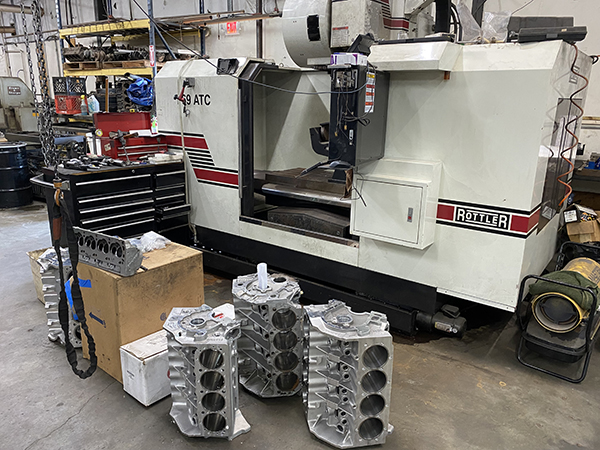
Going a step further removed from human interference is the increased use of robotics. In this industry, the use of robotics is still very specific to certain tasks, such as loading and unloading a machine, but it’s something on the rise that allows shop employees to be doing something else.
“It is only a matter of time before this becomes more commonplace in the engine building market, both for performance engines and standard engine rebuilding,” says Sunnen’s Phil Hanna. “These co-bots are simple to use and easy to program.”
One thing only humans have a direct impact on is what exactly they decide to machine using CNCs. For instance, due to the long lead times of many engine components recently, a good number of shops have begun to manufacture and machine their own components in-house as a means to regain control over their engine building processes.
“We just couldn’t get parts at one point and it forced us to manufacture it ourselves so we had control,” says Jamie Noonan of Noonan Race Engineering. “We might have $80,000 worth of parts here and we can’t ship the engine because we’re waiting on a set of $400 retainers that are holding this whole engine program up. We just decided to do that sort of stuff in-house. At the end of the day, it’s just another part fixture that’s getting put into a machine, so that sort of stuff isn’t complex machining compared to what we’re used to.”
Shops with CNC capabilities are more and more transitioning into making billet parts and whatever components they need to keep projects in-house.
“Rottler saw this coming several years ago and introduced our higher horsepower spindles, tool changers and our Rottler CAM programming for making it easier to manufacture parts, not to mention ability to read G code or use other G code programs like Fusion 360,” says Rottler’s Ed Kiebler. “More customers seem to be realizing that in order to stay in business they need to move into the CNC area. Not only are they more accurate, but can be running while you are at lunch or dinner or home playing with the kids.”
While the trend has been more parts being produced by shops in-house, the pandemic definitely brought to light the expertise element needed to do some of those higher-end parts.
“You still have to have good processing expertise and good machining skills, and so finding people who are capable of doing that is always an issue,” Mazak’s Kerscher says. “It’s not uncommon that our salespeople could sell the machine if they could find an operator for it. Sometimes the issue is not whether they can buy a machine or not, it’s whether they can find the proper skill sets to make that machine productive for them. Manpower is still an issue.”
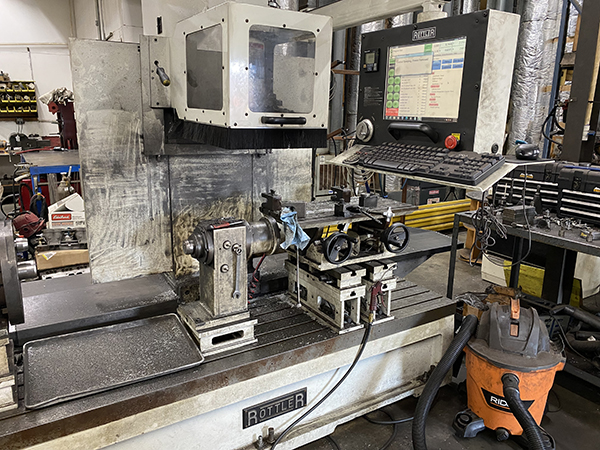
In this regard, more shops are beginning to look for multipurpose machines that can perform several different operations.
“The more operations they can perform on the same machine using the same zero points equals a more precisely machined product,” says RMC’s Napolitano. “We are always finding a way to take care of any of our customers’ needs in regards to special machining processes.”
CNC Landscape Today
Today, CNC has found its way into many different kinds of equipment, from hones to lathes to mills and even grinders, so what’s been popular among engine builders recently and why are they opting for a CNC machine?
“For Centroid, the company’s A560 and A560XL port and block combination systems have been popular,” says Centroid’s John Cowher. “A large majority of shop owners gravitate toward a CNC machine because of efficiency and accuracy, but also because it takes out the human factor of an employee.”
Yes, it is very hard to replace a tenured, skilled, hardworking employee, but for those shop owners who have to deal with under-skilled, money hungry, unreliable employees, a CNC machine can be a business saver.
“The idea is the CNC puts our customer in control of the shop, so no outsourcing or minimal outsourcing is needed,” Cowher says. “Also, they likely are increasing their services, so the CNC is more justifiable, therefore a faster ROI. To say replace an employee may be a bit far-fetched as the employee may very well be running the CNC.”
For the folks at Rottler, 4-axis CNC honing machines have been the most popular machines followed by 4-axis block machining centers and the combination 5-axis porting and block machining centers.
“It isn’t a matter of actually replacing an employee, but purchasing a new CNC machine will actually generate enough additional billable hours to act as an additional employee they couldn’t find,” Rottler’s Kiebler says. “I am constantly amazed at what customers can do with these machines.”
In the world of honing, Sunnen’s Cylinder King line remains a popular choice among shops, and the latest version is the PLC-controlled Model SV-15. However, larger race teams and production builders often opt for the new PC-controlled SV-35.
“This hone can be ordered with a full range of options such as automatic bore-to-bore honing,” Hanna says. “We have found that most of our customers want to make their current staff more productive with these machines, and these new versions make it easier to train new machine operators who typically do not have the skills found in previous generations.”
At RMC, they are finding that shops are purchasing machines to cover employee issues and to increase engine machining speed, have higher accuracy, more capability, and increase profitability.
“Currently, and for the last few years, the enclosed CNC machines seem to be the most popular,” Napolitano says. “They have more powerful spindle motors, a 24-pocket tool changer for performing multiple operations with multiple tools without operator intervention… Also, the enclosed machines provide good chip containment and coolant capability for a cleaner shop environment. All the engine machining processes we perform have been designed and tested to cut dry. However, if the customer wants to get into any other types of machining, fluid coolant is a standard feature of our machines.”
When we asked Okuma about its most popular machine options, Wade Anderson told us that their MA-600HIII, Multus U machines, grinders, lathes, and 5-axis platforms have all been selling well.
“Our machines and automation are very flexible, and we expect customers to get creative,” Anderson says. “Horizontals and 5-axis machines are well suited for the large components. When you are getting into high-performance modifications for airflow enhancements, our multitasking machines (Multus series) are utilized for being able to articulate the milling head in a rotary axis combined with part rotation via the C-axis. Brackets and covers are good applications for 5-axis mills, but depending on volume and part costs, the Genos series mills can be a great approach for a budget-friendly solution.”
Speaking with Mazak about its popular CNCs, Kerscher pointed toward the vertical machining centers and 5-axis CNCs.
“Most of the machines we provide are what I’d call general purpose,” Kerscher says. “Our vertical machining centers are still probably the most prevalent at most smaller shops. A number of larger shops that might be machining an engine block out of one billet piece of aluminum, those guys are buying a fairly sophisticated, 5-axis capable CNC. We also have Integrex-style machines, which are multitasking and quite popular as well. It all depends on how sophisticated the shop is and what they’re trying to make.”
While shops may be purchasing CNCs for a number of different reasons, at the top of the list is making the shop more efficient, more capable and more profitable.
“CNC features allow that to happen,” Kerscher says. “Shops get into CNC to get the consistency that CNC provides. They can trust the parts coming off the machine to be accurate instead of leaving it to the skill of the operator. That’s the huge advantage. We’re trying to help shops get more productive with the same number of people and improving the quality and predictability of the parts.”
CNC Upkeep
Of course, like many tools and machines within an engine machine shop, CNC equipment needs to be properly taken care of. Manufacturers recommend following maintenance guidelines, but also using commonsense to keep equipment running well.
With proper maintanence, such as wiping down cabinets, removing metal, cleaning and lubricating ball screws, ways and other components, a key thing with today’s machines and the electronics is a need for consistent power without large fluctuations in voltage. Following those good maintenance practices is a must, but not putting your machine at risk of failure is also important.
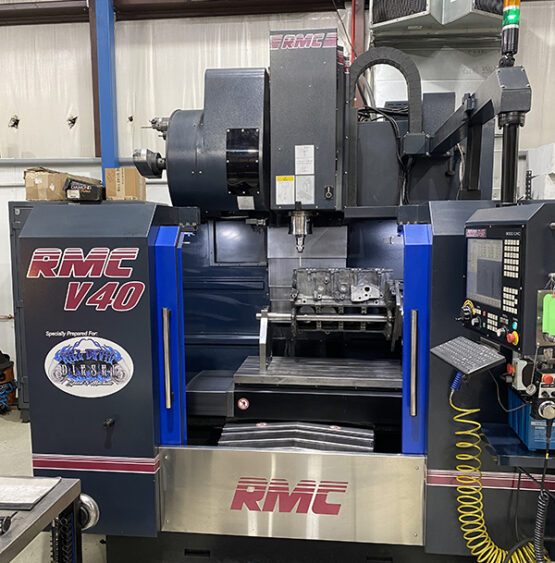
“Engine builders must understand the applications thresholds or limitations, and don’t ‘hammer’ the machine with excessive speeds and feeds and depths of cut,” Centroid’s Cowher says. “Follow good maintenance practices, do daily spindle warmups and try to keep the shop temperature controlled. You must be on your game all the time when telling the CNC what to do.”
Something else that will help keep your CNC running well is choosing the right CAD/CAM partner.
“Choose a CAM partner that has a key expertise in the type of work you do,” Okuma’s Anderson says. “Not everyone is created equal. Esprit has a unique area of expertise, while Hypermill has another. You’ll save money in the long run choosing a system that specializes in your area of interest.”
Be patient to build a robust process that will help you remove the operator or remove human intervention.
“That’s key to making great quality parts consistently,” Mazak’s Kerscher says. “It’s a learning curve that sometimes takes years.”
Of course, if you ever need additional help or assistance, don’t hesitate to call the CNC manufacturer for advice.
Future of CNC
Where does the future of CNC go from here? Clearly, automation will continue to advance, as will software and the machines’ capabilities, but some believe further innovation will happen slowly rather than in leaps and bounds.
“We will see continuing trends to automate,” Kerscher says. “There will always be more sensors and things coming out to help people understand what’s going on inside the machine tool. I don’t know that there’s any big revelations coming, but I do think there will be a lot of slow innovation towards more complete understanding and more data-driven solutions. We can gather a lot of data from the machines, which can help make the next part.”
All-in-all, the future is looking bright for CNC. Manufacturers continue to develop more robust hardware, software, and control systems, to make products more user friendly, for more applications, with better accuracy, rigidity, speed, and safety. EB

